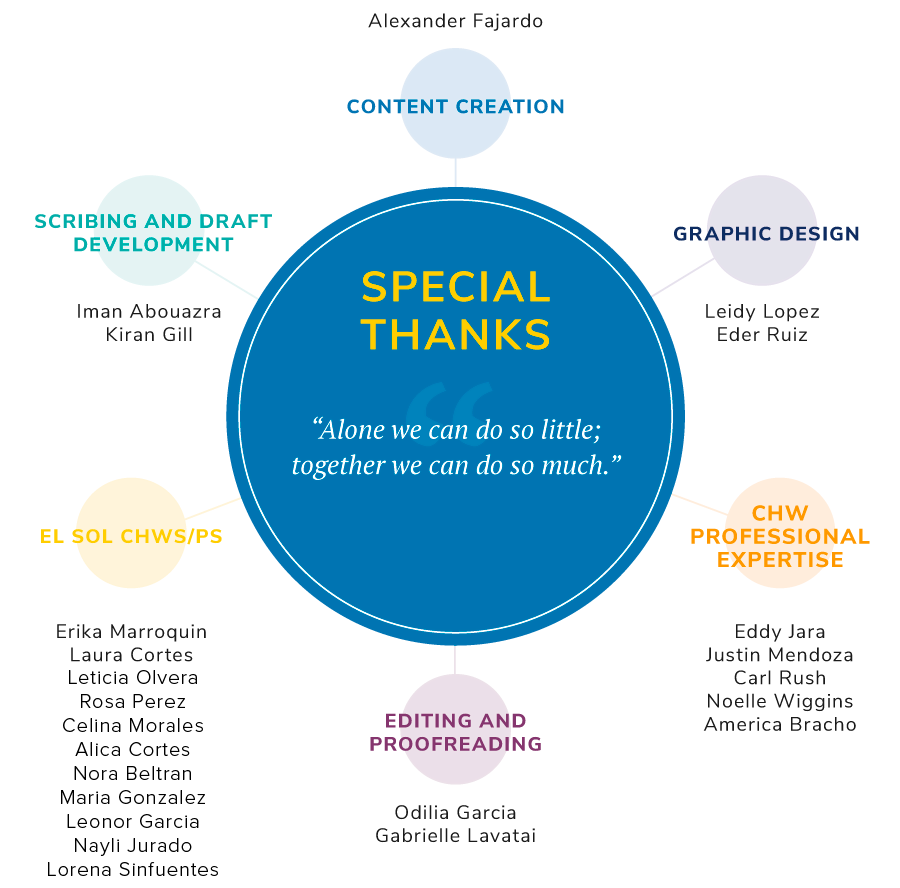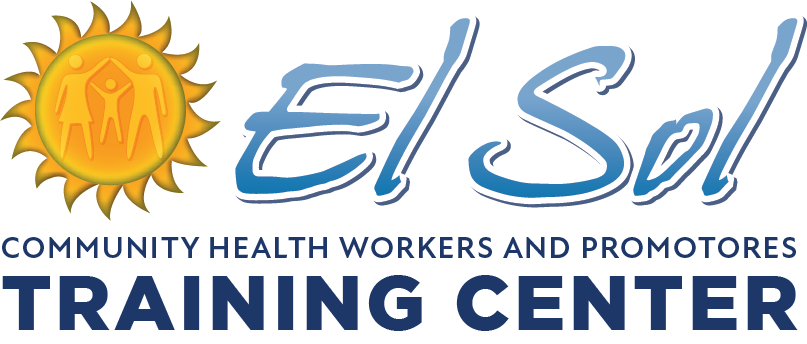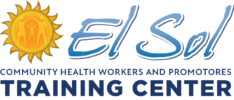Preserving a Transformative Community Health Worker/ Promotor Workforce:
El Sol’s CHW/P Training Center Approach
Comments from Friends
A timely and significant contribution to the professional identify of the CHW/P
“This study is a very timely and significant contribution to both the professional identity of the CHW/P and the principles and practices necessary to protect that identity, while responding to the growing embrace of CHWs/Ps by the health care establishment. We must all keep this truth visible: if institutions want the benefits that CHWs can provide to communities, populations and individuals, they must ‘let CHWs/Ps be CHWs/Ps’ and not try to make them into something resembling another health-related profession that may be more within their comfort zone. El Sol CHW/P TC has captured the key points needed to maintain this crucial focus.”
This document offers many useful reflections and tools
“This document offers many useful reflections and tools to institutions contemplating the inclusion of CHW/ Ps into their workforce. Institutions that have not work with the CHW model are now contemplating including them in the workforce in the hope that by having the “appropriate workers” many social determinants of health could be addressed and we all could have a more equitable society. In this document, El Sol CHW/P TC offers an important guidance to those institutions to assess their readiness in this process. It provides analysis on the importance of preserving the transformative power of CHWs/Ps.”
Addresses many of the urgent questions around expanding and preserving the workforce
“This case study from El Sol Community Health Workers and Promotores Training Center (El Sol CHW/P TC) serves as a powerful review of best practices and addresses many of the urgent questions around expanding and preserving the workforce such as training, integration, advocacy, career pathways, and most importantly, centering equity in these systems. Community-Based Organizations, such as El Sol CHW/P TC, continue to lead in these systems transformations and we hope to see organizations new to [the] workforce following their lead and partnering with them.”
It describes a replicable training model that contributes to increase the capacity of all CHWs
“This publication is important because it collects and documents the history of the [transformation communities] through the empowerment of community health workers/promotores and the information establishes an incomparable testimony of the vital role that CHWs/Ps play at all levels and especially in reducing inequities and disparities. It beautifully captures the history and the evolution of CHWs movement until the present’s times. It describes a replicable training model that contributes to increase the capacity of all CHWs while getting deeper into discussion of sustainability and financing of CHWs as a workforce. It provides a permanent record of accomplishments, which may prove to be valuable for future generations.”
The description of the capacity-building process is detailed and insightful and can be used by others to enact a similar process.
“Building on long-standing practice in CHW programs around the world, the El Sol CHW/P Training Center uses popular/people’s education to draw out and build on the existing capacity of CHWs/Promotores/as/xs. This report appropriately and effectively highlights how using popular/people’s education in CHW capacitybuilding efforts can help to maintain the integrity of the CHW profession and equip CHWs to play a full range of roles. The description of the capacity-building process is detailed and insightful and can be used by others to enact a similar process.”
Executive Summary
COVID-19 not only revealed our vulnerability, but also showed us our strengths and resilience that exist in our communities which is embodied by community health workers and promotores (CHWs/Ps). We see a trend of more organizations integrating CHWs/Ps into their operations. These institutions can become partners in preserving the health equity roots of CHWs/Ps by assuming more roles that promote community transformation.
Yet, the systems around payment, reimbursement, and integration models for CHWs/Ps that are being developed have attempted to fit CHWs/Ps into existing organizational systems and paradigms.
To take advantage of this transformative opportunity, an approach that seeks to understand and embrace the skills, talents, context, and paradigms that the CHW workforce possess is needed.
Through this case study of a CHW/P training program in southern California (i.e., the El Sol CHW/P Training Center), we sought to build the capacity of organizations to expand their community transformation role as they integrate CHWs/Ps into their operations and mitigate the threat of CHW/P co-optation. We explain how a community-based CHW/P training center applied popular education throughout the CHW/P capacity-building process in order to advance and maintain the roots of the CHW/P movement. By describing the interrelated components of El Sol CHW/P TC theory of change and explaining the application of guiding principle, this case study generates implications for organizations that aim to integrate CHWs/Ps into their operations.
As more organizations are integrating CHWs/Ps into their operations, we hope that this case study can help stimulate reflection, dialogue, and action among CHW/P organizations on how to incorporate these long-standing guiding principles into their operations. In doing so, we can continue to build examples of CHW/P-centered interventions that reflect values and paradigms such as health care for all, health equity, and health as a right.
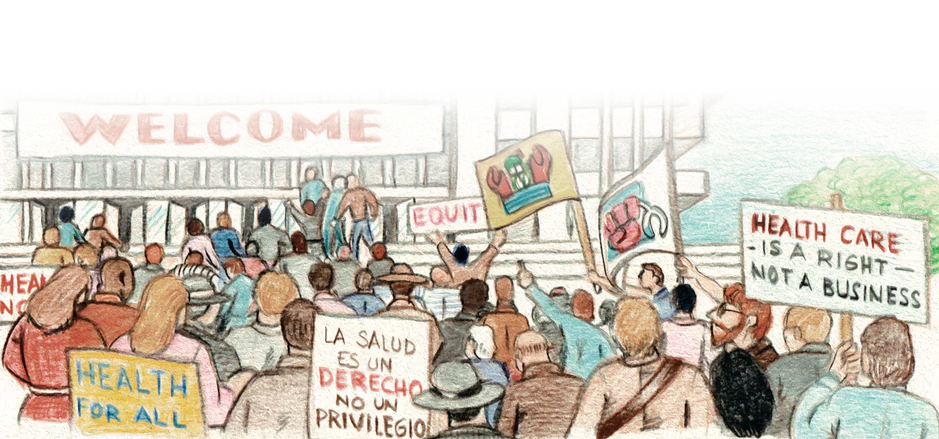
Introduction
Larger-scale initiatives are underway to integrate Community Health Workers and Promotores (CHWs/Ps) into organizations/institutions (e.g., state and local government, health care plans, schools, local hospitals and clinics). The integration initiatives include certification/professionalization systems and reimbursement/payment models. Historically, CHWs/Ps’ scope of practice has typically revolved around community-driven transformation with marginalized groups –outside of, yet interacting with, institutions. The talents around community transformation that the CHW/P workforce possesses represents an opportunity for institutions to transform their policies, systems, and environments to achieve more positive outcomes among the people they serve and surrounding communities. This transformation can involve applying common CHW/P workforce principles (e.g., health care as a right) and skills (e.g., navigation existing resources) into an institutional context. To take advantage of this opportunity for transformation, institutions can seek to understand, preserve and embrace the talents, experiences and paradigms that the CHW/P workforce possesses.
A growing body of literature provides recommendations for institutions to integrate CHWs into their operations/leadership. Yet, for the most part, the institutional systems to integrate CHWs/Ps that are developed have attempted to fit CHWs/Ps into existing service delivery models. This institutional momentum towards CHW/P adaptations to institutional roles/norms poses a risk to the CHW/P workforce and the communities they serve.
If this institutional momentum advances, the CHW/P workforce faces a risk of drifting away from their social justice/systems change roots and becoming accountable to (and allied with) the institution they work in – instead of the CHW/P’s community.
One way to increase awareness about the potential contributions of the CHW/P workforce is to understand what the CHW/P capacity-building process is (e.g., the driving paradigms, the training package, and the intended outcomes).
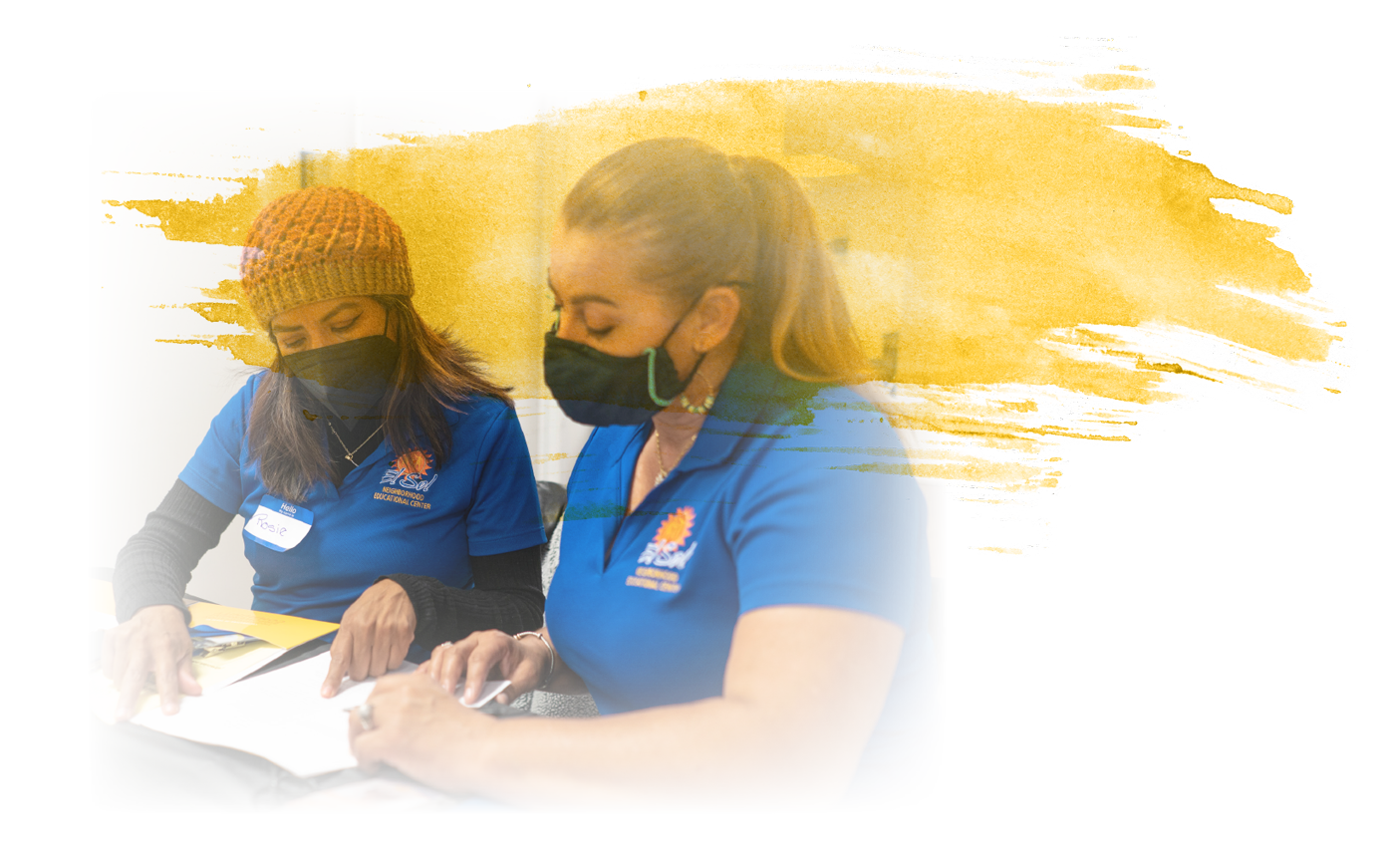
The Reflection
To illuminate the underlying principles that guide CHW/P training program implementation, we embarked on a reflective journey to explain our experience in the application of the principles that guide a CHW/P training program in southern California (i.e., the El Sol CHW/P Training Center).
As we wrote this case study, we looked into what are the conceptual approaches of existing CHW/P workforce training programs. In the literature we saw that, while the skill building content and teaching methods are described, the intended community transformation principle, intended outcomes and related skill set is usually not articulated. To embrace and support this opportunity for the CHW/P workforce to transform the institutional policies, systems and environments, we began a retrospective analysis of the approach (and lessons learned) of the El Sol CHW/P TC.
To understand how the El Sol CHW/P TC guides the work of CHW/P capacity building, we examined how the organization’s principles were being approached. What is the El Sol CHW/P TC praxis? That is, what is at the intersection of the guiding principles and the actual practices of the training center? What is the relationship of the components comprising the praxis? After defining what the praxis is, we looked at its implications for transforming institutional settings (e.g., policies, systems, environments).
Background
Community Health Worker/ Promotor Training:
Application of Underlying Principles
In September 1978, the WHO International Conference on Primary Health Care was held in Alma Ata – what is now known as Almaty, Kazakhstan. At the Conference, 138 countries agreed that achieving ‘Health for All’ was a global imperative. A central strategy to make the Health for All vision a reality was strengthening CHW/P interventions.
Over 40 years later, health-promoting entities continue to recognize the crucial role CHWs/Ps play in helping to reduce health disparities in underserved communities (U.S. Department of Health & Human Services, 2022).
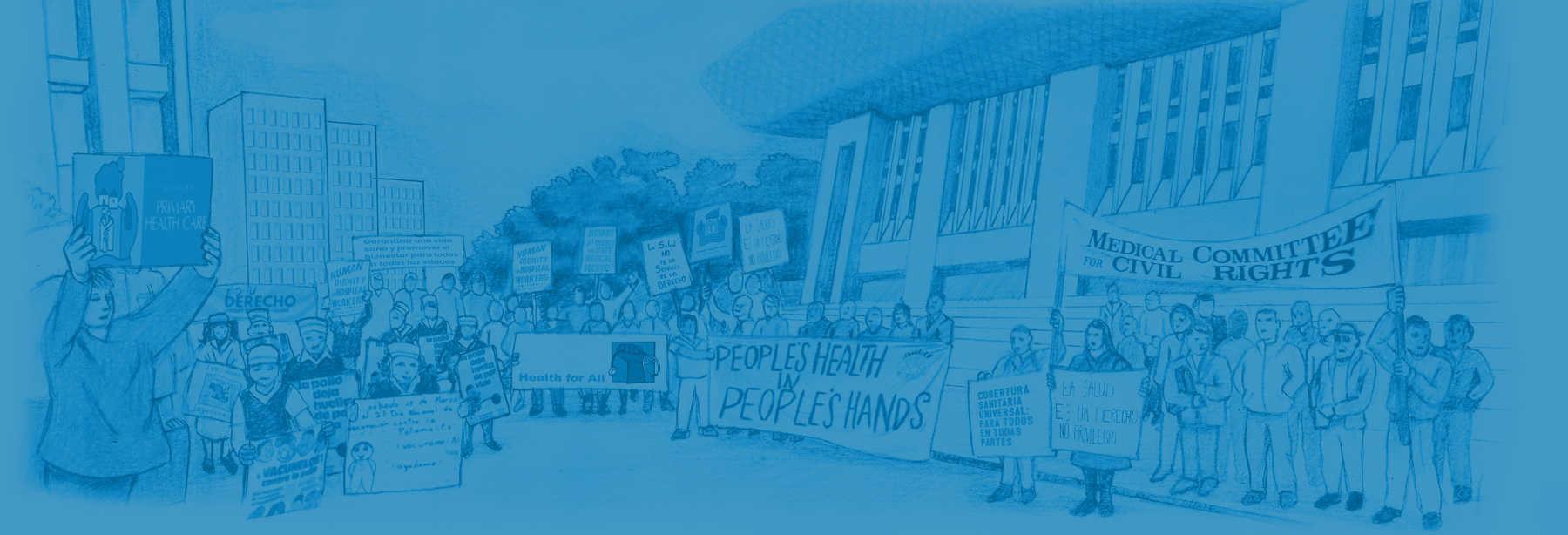
Health Equity Foundation
of CHW Values
CHWs/Ps serve in various vital roles to promote the health of communities, for example, a bridge between the community and health organizations, the government, and social services. These roles come with varying titles depending on the entity they are associated with. Common titles include health coach, community health advisor, family advocate, liaison, promoter, outreach worker, peer counselor, patient navigator, health interpreter, or promotor(a) de salud (Kaur, 2022).
Yet, CHW/P work is more than a set of roles. At the individual level, CHW/P work is a vocation, to identify and journey with those relegated to the margins. At the macro level, it is a movement – to carry the hopes of marginalized communities. This movement has health equity as its guiding value and legacy.
This paper aims to preserve and expand the CHW/P legacy by offering insight into how organizations that are incorporating CHWs/Ps in their operations can be an ally in preserving and expanding the legacy of the CHW/P movement.
“At the macro level, it is a movement – to carry the hopes of marginalized communities.
This movement has health equity as its guiding value and legacy.”
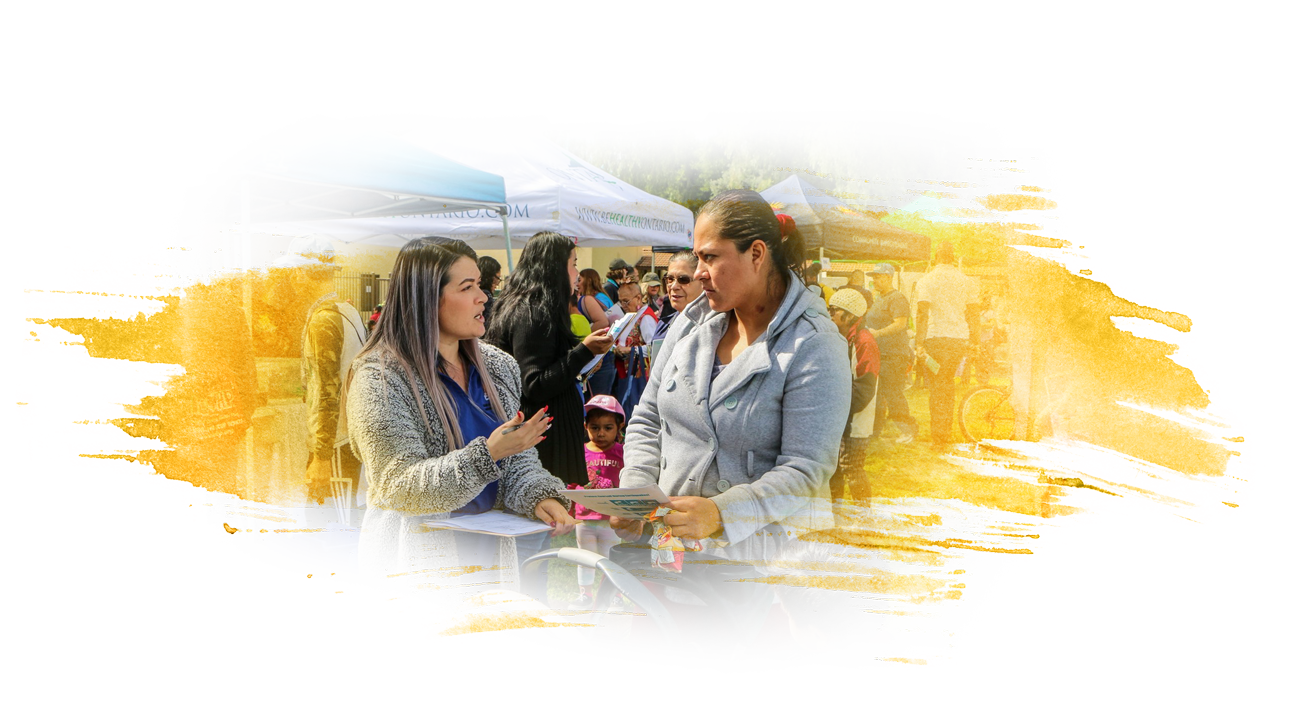
Community Health Workers and Promotores Contributions to Health Equity
Before the historic conference of Alma Ata, where CHWs/Ps were announced as an integral part of achieving Health for All, CHWs/Ps already had an impressive track record as agents for health equity. CHWs/Ps have a trajectory of serving communities in roles such as midwives, healers, and mentors.
In the early 1920s, larger-scaled community health programs such as the “Farmer Scholars” in China and the subsequent Barefoot Doctors movement trained local residents to keep vital statistics, administer vaccination campaigns, administer essential medicines, provide health education, and promote environmental hygiene.
During the 1960s, CHW/P-led programs were widely disseminated throughout countries such as Honduras, Nicaragua, and Venezuela. In California, promotora-centered community interventions that embraced a popular education approach spread throughout the 1990s (e.g., El Sol Neighborhood Educational Center, Latino Health Access) – while community clinic-based CHW projects and a statewide CHWs networks (such as Vision y Compromiso and others) ascended in the early 2000s.
Since the Alma Ata Declaration, the recognition of the CHWs/Ps’ contributions to community health continues to grow. Their scope of practice has revolved around the community-driven transformation, with and for marginalized groups. CHWs/Ps remain outside of, yet interacting with, non-community-based institutions.
CHWs/Ps have demonstrated their effectiveness at addressing social determinants of health (Rosenthal et al., 2011). As part of the COVID-19 response strategy, the US Department of Homeland Security included CHWs/Ps as part of the Essential Critical Infrastructure Workforce in 2020 (Rodriguez, 2022).

Toward More Integration
There is now a growing number of larger-scale initiatives underway to integrate CHWs/Ps into a broader range of organizations and institutions including state and local government initiatives, health plans, school, local health system and health centers, and faith based organizations.
Some of these integration initiatives include efforts to identify sustainable reimbursement and payment models (George et al., 2020), others include certification and/or professionalization systems. The hope is that the significant contributions CHWs/Ps have made to community health and equity through community-based organizations and grassroots settings would translate and come to fruition in new settings and different contexts.
This trend towards integrating CHWs/Ps into more organizations has multiple drivers, including national level funding legislation and funding streams (e.g., state Medicaid programs) allowing for the reimbursement of some CHW/P activities. Also with the growing body of research around the County Health Rankings (Gennuso et al., 2022), there is a growing awareness of the importance of addressing social determinants of health to improve patients’ lives and their health care.
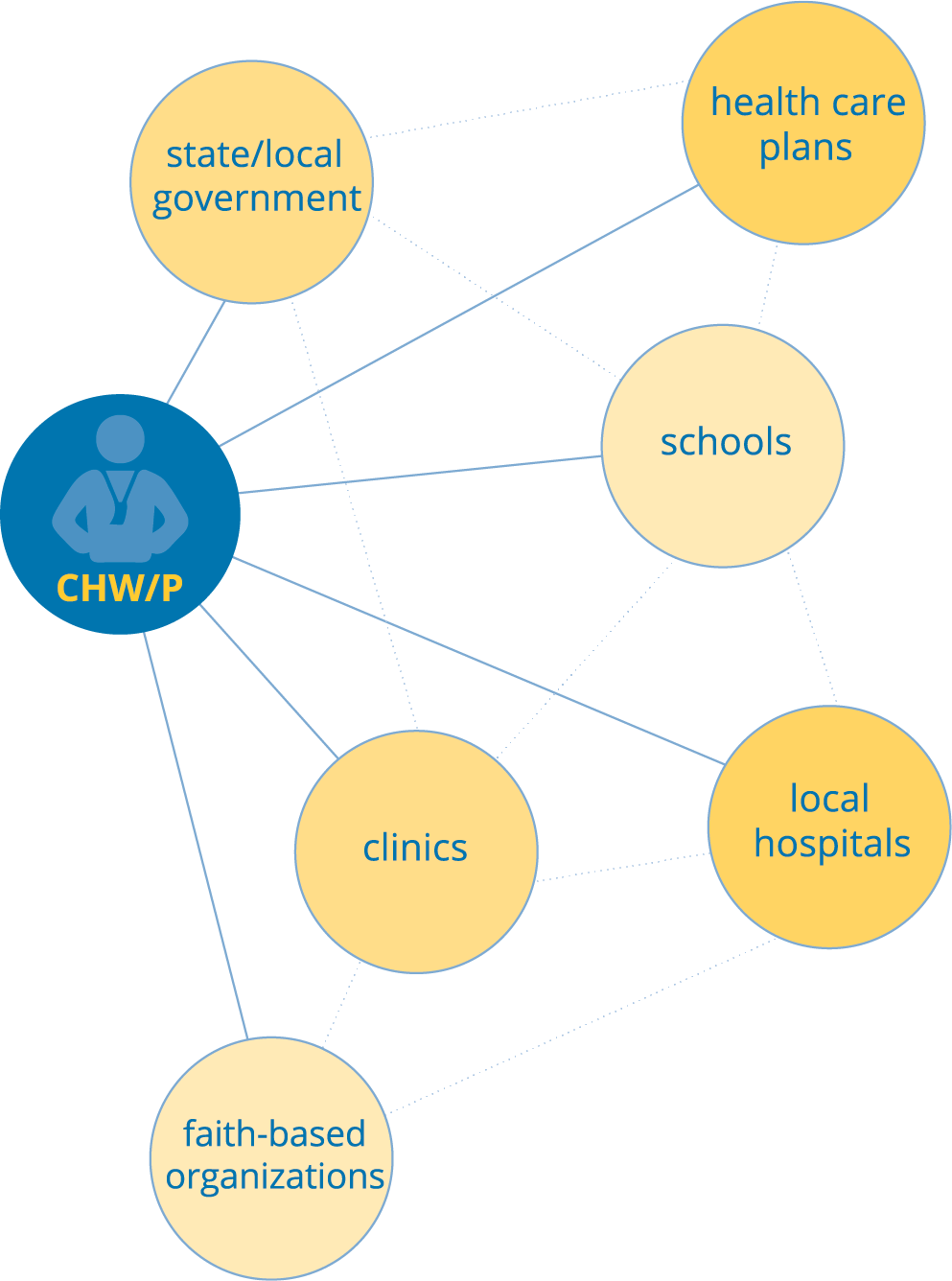
Challenges and Opportunities of Larger-scale Integration
Organizations integrating CHWs/Ps into these new settings have achieved mixed results. Most organizations have had success in engaging CHWs in the roles of care coordination and as health navigators. Other roles include group health education, collecting vital signs, and conducting outreach (George et al., 2020).
Yet, many organizations have experienced the challenges of not having the organizational readiness or support systems to place CHWs/Ps in community transformation roles, such as capacity-building and advocacy (Visión y Compromiso, 2017).
In many settings, CHWs/Ps have had to adapt to the culture of organizations with limited experience in, or motivation among leadership to embrace, health equity/community transformation work. With the trend toward large-scale CHW/P integration into new settings, discussions about CHW/P certification have resurfaced. Some of the unresolved questions related to CHW/P certification include: What/who is being certified? Who benefits? Who gets left out?
These questions are especially important if certification is used as a criteria to determine who gets to practice as a CHW/P. These challenges experienced by health and social service systems represent a risk to the health equity legacy of the CHW/P movement.
Large-scale CHW/P integration initiatives not valuing CHWs/Ps’ community transformation roles can result in the co-optation of the CHW/P movement. The co-optation happens when CHWs/Ps become less embedded within their community, and become more accountable to and allied with the institution they work in instead of their original community.
When this happens, CHWs/Ps can drift away from their health equity and community transformation legacy, and become less effective at achieving health equity outcomes.
CHWs/Ps operating in these new settings represent an opportunity to amplify the community transformational impacts of CHWs/Ps and the impact of the organizations they are integrated into. The existing literature points towards key steps to build the readiness of these organizations to advance this type of institutional transformation. Institution leaders and team members in settings that integrate CHWs/Ps into their operations should seek to understand and embrace the CHW/P community transformation model. In reviewing the existing literature on the foundational methodologies that guide CHW/P capacity-building programs, we saw that, while the skill-building content and teaching methods are described, the intended strategy to achieve intended community transformation and an explanation of how the guiding principles affect training content are usually not articulated. With greater insight into the foundational methodologies that guide CHW/P capacity-building, institutions can build the organizational readiness to place and support CHWs/Ps in change agent roles.
Institutions integrating CHWs/Ps into their operations can become partners in preserving the community transformation and health equity roots of CHWs/Ps by assuming more health equity and community transformation roles as an organization.
This can contribute to more positive outcomes among the people they serve and surrounding communities. These settings can also develop more CHW/P career advancement pathways that reflect CHW/P talents and contributions.
the case study
To embrace this opportunity to amplify the transformative impact of the CHW/P workforce, a group of colleagues and allies set up an interpretive team to explore the design and implementation of a CHW/P training program in southern California, the El Sol CHW/P Training Center, with over 30 years of experience building CHW/P capacity. We bound this retrospective analysis together as an exploratory case study. Through this case study, we sought to build the capacity of organizations to expand their community transformation role as they integrate CHWs/Ps into their operations and mitigate the threat of CHW/P co-optation.
We developed inquiry-guiding questions with the intention to offer deeper insights to organizations that aim to integrate CHWs/Ps into their organizations.
To address the gap in articulating how foundational methodologies guide CHW/P capacity-building programs, we asked:
▶ What are the underlying principles that guide and inform the training program’s design?
▶ How are these principles applied in training center operations and tactics?
To offer organizations insights into what are the potential community transformation contributions of CHWs/Ps, we asked:
▶ What are the components of the training package?
▶ How do the capacity-building components intersect with each other?
▶ What are the intended outcomes of CHW/P training?
▶ How does a CHW/P Training Center build CHW/P capacity for health equity/community transformation work?
To promote more organizational support systems (e.g., supervision, career enhancement, community embeddedness) to foster CHW integration, we asked:
▶ How can CHW/P career advancement be structured to recognize CHW/P contributions and training?
Consistent with qualitative inquiry (Creswell & Poth, 2018), we used a spiral approach to data collection analysis. This involved moving in an interpretive loop between reviewing documents, memoing, group reflections, key informant interviews, categorizing and visually representing the intersection between emergent categories. We began our inquiry in 2021, the year El Sol Neighborhood Educational Center celebrated its 30th year of partnering with CHW/P on community transformation.
Our first step was to identify CHW/P documents to review. We identified documents from the gray and peer-reviewed literature that illuminated the current trends in CHW/P integration into new settings. From the El Sol CHW/P TC document archive, we identified documents that illuminated the El Sol CHW/P TC paradigms and practices. We drew content from foundational texts in the historical CHW/P literature (Freire, 1970). The interpretive team developed analytic memos based on the document reviews and conducted group reflection sessions based on the analytic memos. We conducted semi-structured key informant interviews with a few national-level CHW workforce development in order to better understand/validate the current trends in CHW/P integration. The emerging categories were identified and visually represented.
VSOT:
Vision, Strategy, Operations, Tactics
In the process of reviewing documents, we used the VSOT model to reflect on how El Sol is carrying the thread from vision to tactics from strategies and operations.
Vision drives strategy. Strategy shapes operations. Operations implement tactics.
A vision is best described as a direction that the organization wants for the future. A strategy is the logic for how to approach the vision, along with a primary level of detail overviewing the method for how to achieve the vision. An operation is the initiation of strategies designed to promote the vision. A tactic is a very detailed action, driven by specific timetables and operational plans. The creation of the vision that translates the strategy into intentional operations and tactics are all pieces of a cycle that is necessary to effectively serve the public. All four components are needed to work together.
Within El Sol, there is a vision of people, groups, and organizations working collectively on a path toward health equity. El Sol’s strategy is to build CHW/P capacity to facilitate community-driven, coordinated action to advance transformative social change. The El Sol CHW/P TC is an operation in which to establish a CHW/P training ecosystem (e.g. training curriculum/ experiences, including reflection and dialogue) that supports CHW/P personal/ emotional empowerment while building CHW/P capacity to promote transformative social change. Within El Sol, a tactic is to facilitate space for personal and emotional wellness and empowerment.
“Within El Sol, there is a vision of people, groups, and organizations working collectively on a path towards health equity.”
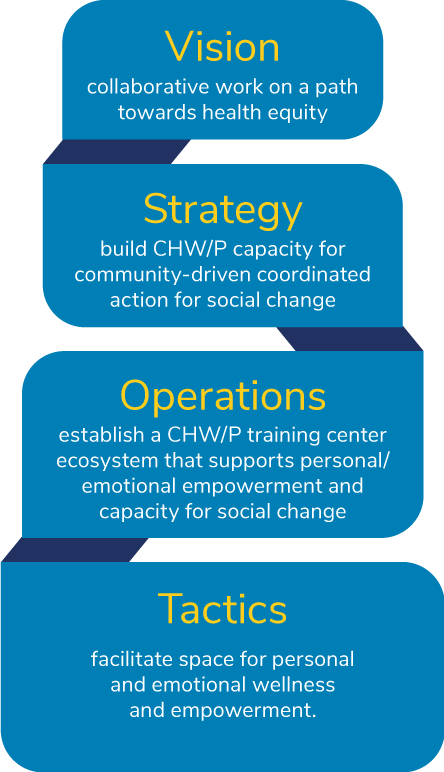
The El Sol CHW/P Training Center
Since its founding in 1991, El Sol has built a trajectory of training, deploying, and supporting CHWs/Ps in California and across the Country. To strengthen the support systems for CHW/P capacity-building, El Sol founded the Community Health Worker Academy, which evolved into the El Sol CHW/P Training Center in 2007.
Through an ecosystem of transformational learning experiences, the El Sol CHW/P TC cultivates emotional and cognitive readiness so that CHWs/Ps use critical thinking to listen, train, inform, provide, advocate, and ultimately impact their communities’ health.
The development of learning experiences begins with the incorporation of Paulo Freire’s popular education philosophy and continues with critical thinking, communication skills, and self-reflection integrated with mentorship and coaching (Freire & Ramos, 1970).
The training package includes skill building to deliver interventions through direct services, informal counseling, health education, and community organizing. El Sol CHW/P TC has developed over 200 transformative training curricula and trained more than 2,000 multi-cultural/multi-lingual CHWs/Ps, nationally and internationally, and provided Technical Assistance to more than 200 agencies.
The El Sol Training Center is wellsuited for this case study since it has a history of reflecting on the Training Center’s practice, and effectiveness, and is already positioned within the California and nation-wide CHW/P capacity-building network. In striving to adhere to the foundational principles of the CHW/P movement of popular education, the El Sol Training Center is not unique on some level.
Given the scarcity of explanations of how CHWs/Ps apply their underlying guiding principles in the literature, this case study can provide insights for organizations that want to incorporate CHWs/Ps into their operations in a way that can maintain fidelity with the underlying principles and roots of CHW/P work and that fit within the organizational context.

-
▶ Topics range from clinic-based, mental health, diabetes, nutrition and physical activity, life coach, domestic violence, emergency preparedness (COVID-19), supervisors and management, community leadership
-
▶ Latino, Asian, African American, Native American, LGBTQ, Youth



El Sol was one of the first agencies in the state to develop a curriculum for CHWs/Ps in mental health
El Sol has received state-wide and national recognition from the White House as Nonprofit of the Year
History of El Sol
EXPERIENCE
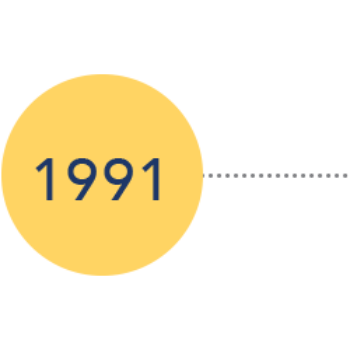
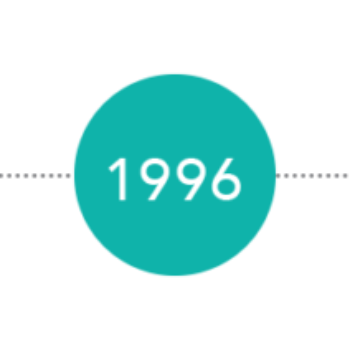
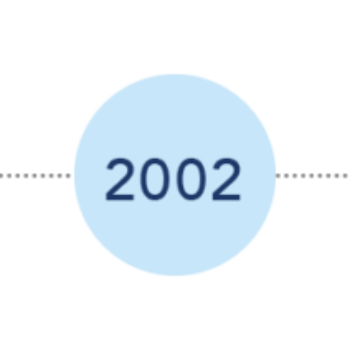
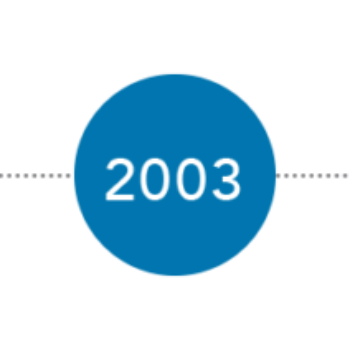

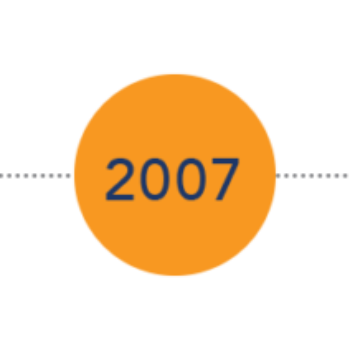
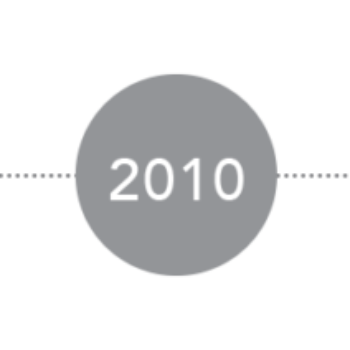




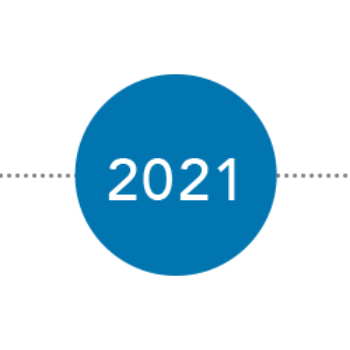
Over the years, El Sol CHW/P Training Center has trained over 2,000 CHWs/Ps and has provided technical assistance nation-wide and internationally.
Application of Popular Education
The inspiration and guiding approach of the El Sol CHWs/Ps Training Center stems from popular education. Popular education is a form of adult education that, for popular education practitioners, is a philosophy, a methodology, and an art.
Four interrelated concepts within popular education are the learning and teaching cycle, horizontal power relationships, the search for root causes, and conscientización.
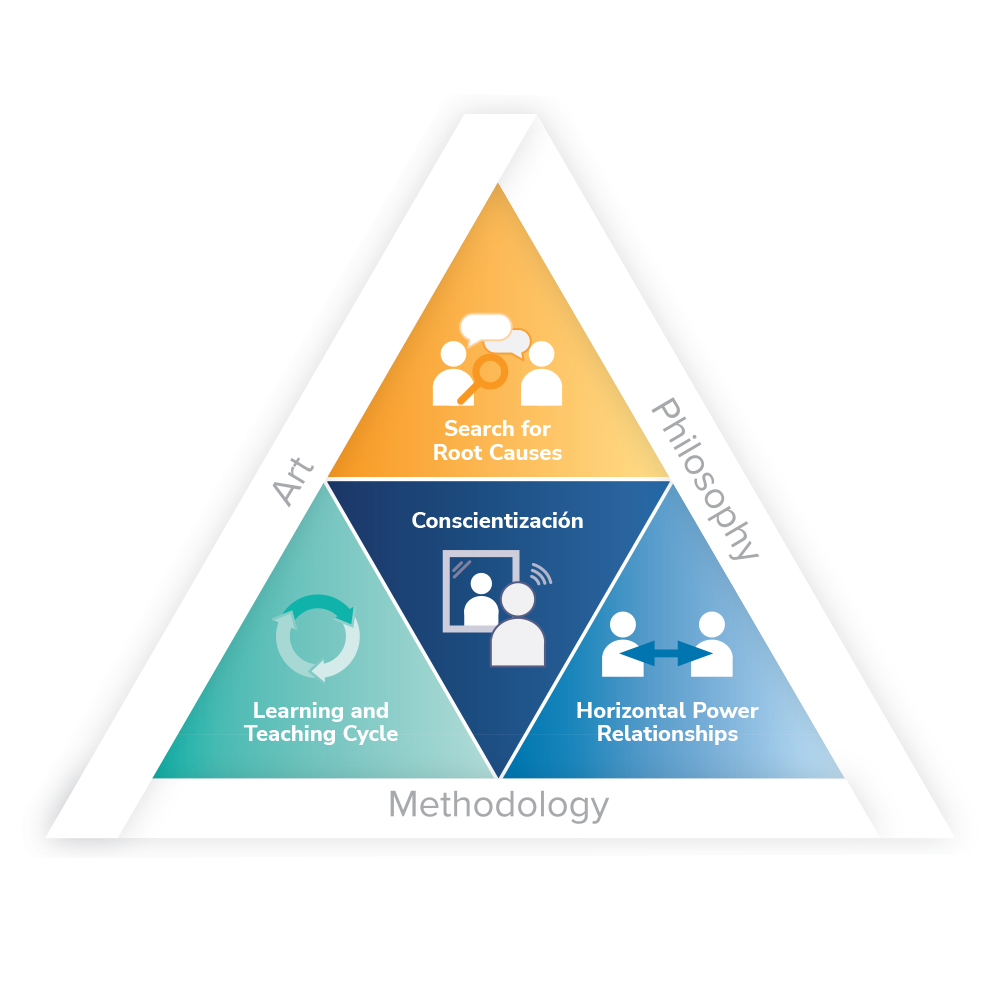
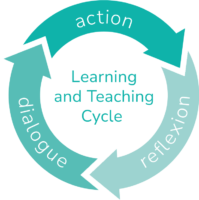
1. Learning and Teaching Cycle
In popular education, the overall learning and teaching refer to the cyclical steps of action, reflection, and dialogue, then back to action. For example, when CHWs/Ps implement an intervention in the field, they reflect on how it went and share with a group of CHWs/Ps to analyze and discuss the implications for subsequent action.2. Horizontal Power Relationships
Horizontal power relationships refer to equitable, non-hierarchical relationships between learners and teachers, given that our lived experiences place us all as learners and teachers. It is the practical application of social/educational equity in learning settings. Instead of El Sol CHWs/Ps Training Center staff assuming the top-down position […]3. Searching for Root Causes
Searching for the root cause of a particular behavior or condition involves facilitating dialogue so that learners examine their lives critically in order to engage in collective analysis of the source causes of inequities. This then informs subsequent social, political and cultural action. For example, when CHWs/Ps implement a health […]4. Conscientización
An overarching concept in popular education is conscientización, or the awareness of one’s role to improve the conditions people experience. To strengthen CHW/P capacity to serve as catalysts for change through a holistic transformative learning approach, El Sol CHW/P TC encourages self-directed transformational learning through […]As a result of experiencing these four elements of popular education in their capacity-building journey, CHW/P incorporate these popular education concepts into their practice as the foundational principles to support their community transformation work. As the CHW/P capacity-building process reflects the lived experiences of CHWs/Ps, the CHW/P’s craft of transforming the community must reflect the aspirations of their community (Wiggins et al., 2013).
The alignment between the CHW/P’s capacity-building process and their people’s aspirations is the foundation of CHW/P’s success. In the next section, we describe the components of CHW/P’s capacity-building process.
El Sol CHW/P Training Center Components
El Sol CHW/P TC provides an ecosystem of learning-practicereflection opportunities to analyze and innovate solutions to address health/social inequities. To offer organizations insight into the components of CHW/P’s capacity-building process, we developed a theory of change specific to El Sol CHW/P TC’s process. A theory of change assists in explaining a program framework, lessons learned, how and why a desired change is expected to happen, and communicate the intricacies of an intervention (Center for Theory of Change, 2021).
The El Sol Training Center’s Theory of Change consists of key interrelated components:
Click on a component list below.
The El Sol Training Center’s Theory of Change consists of 5 key interrelated components.
El Sol CHW/P Training Center Components
The five components interrelate with one another to create the essence of the El Sol Training Center.
El Sol CHW/P TC provides an ecosystem of learning-practicereflection opportunities to analyze and innovate solutions to address health/social inequities. To offer organizations insight into the components of CHW/P’s capacity-building process, we developed a theory of change specific to El Sol CHW/P TC’s process. A theory of change assists in explaining a program framework, lessons learned, how and why a desired change is expected to happen, and communicate the intricacies of an intervention (Center for Theory of Change, 2021).
The El Sol Training Center’s Theory of Change consists of key interrelated components:
Selection: of CHWs/Ps that stems from the community, by the community, and for the community makes for the best CHWs/Ps. The greatest identifier of a strong CHW/P is a passion for helping others.
Learning Objectives: El Sol CHW/P TC embraces learning objectives that will encourage CHWs/Ps to influence community welfare through shared lived experiences peer-led and peerguided CHWs/Ps and intervention best allows for connection to the community based on shared experiences and upbringing, thus allowing for better connection and understanding.
Capacity-building: When people share their experiences, those experiences are shaping the knowledge and education of others. In the capacity-building process, the facilitators follow a liberatory process in which learning is shaped by the feedback and inputs that are shared by the group and in discussions.
Areas of Action: Capacity-building strengthens implementation in practice settings to best prepare El Sol CHW/P TC lessons in the community. Doing so drives the overarching goal of developing CHW/P skills in the practice settings and ensuring full comprehension by the CHWs/ Ps. With better-developed CHW/P skills and practice, they will be a better-equipped and developed workforce.
Workforce Development: It is important to remember that the learning process is not unidirectional and curricula do not follow a particular order. The learning process that El Sol implements is called, “empowerment evaluation and self-directed learning”. To encourage workforce development using the CT model, this process prompts CHWs/Ps to identify, based on their experience, what more they want to learn and assess their confidence in the learned skills and teachings from the training. They take an active role in not only identifying the areas and skills they want to develop but also in deciding how they want to further build skills into those teachings. Oftentimes evaluation is thought of as an expert teaching the learner how to develop skills; however, the idea is really that the learning is occurring in both directions. The learner is in fact equal to the facilitator, as the information exchange between the two encourages learning from both sides.
Areas of action are responsive to CHW/P learning objectives based on practice experiences in capacity-building. CHWs/Ps are practicing their skills to see what works for them and identify what they want to further develop. Based on CHW/P feedback, El Sol CHW/P TC then modifies the training to incorporate those areas into future training sessions. As facilitators have a lesson plan, learning objectives and activities are prepared and ready for the session. However, as facilitators see participants sharing their views and opinions on how the content plays in their personal life, everyone, including the facilitators, is learning, so adjustments are made to the plan accordingly. Helping people better their self-awareness prompts healthier individuals. The goal is to develop a workforce that brings healthy individuals together to form a healthy community.
discussion
This case study describes how a CHW/P training center applied popular education throughout the CHW/P capacity-building process in order to advance and maintain the roots of the CHW/P movement.
By describing the interrelated components of El Sol Training Center’s theory of change and explaining the application of its guiding principles, this case study generates implications for organizations that aim to integrate CHWs/Ps into their operations.
One way to increase awareness about the potential contributions of the CHW/P workforce is to understand what the CHW/P capacity-building process is (e.g., the driving paradigms, the training package, and the intended outcomes).
To highlight the implications of this case study, in this discussion section, we present a vignette that depicts the theory of change in an adult education training center to discuss the key themes that both Citizenship Schools and El Sol CHW/P TC have in common.
The El Sol CHW/P TC is not unique in its embrace of popular education. Other CHW/P training centers in the United States also base their operations on the philosophy. Since popular education has its origins in the field of adult education, we looked to the adult education literature to gain more insight into how the principles and practices of other popular education interventions compare with the El Sol Training Center theory of change.
We present a vignette of a notable adult education intervention that focused on the empowerment of the learners in order to advance social change. In Myles Horton’s and Paulo Freire’s spoken book, We Make the Road by Walking, Horton explains the origins of an adult literacy program, the Citizenship Schools.
We Make The
Road By Walking
Myles Horton and Paulo Freire
The El Sol CHW/P TC is not unique in its embrace of popular education. Other CHW/P training centers in the United States also base their operations on the philosophy. Since popular education has its origins in the field of adult education, we looked to the adult education literature to gain more insight into how the principles and practices of other popular education interventions compare with the El Sol Training Center theory of change.
We present a vignette of a notable adult education intervention that focused on the empowerment of the learners in order to advance social change. In Myles Horton’s and Paulo Freire’s spoken book, We Make the Road by Walking, Horton explains the origins of an adult literacy program, the Citizenship Schools.
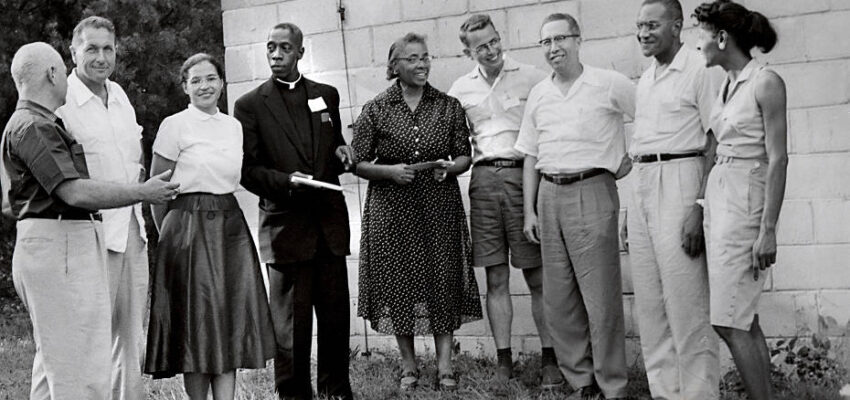
Nashville Public Library´s Digital Colletions
Photograph or wordlshop participants at Highlander Folk School, Monteagle, Tennesse, 1957. Malone, Jhon (Photographer)
The Citizenship Schools taught African Americans in Johns Island, South Carolina to read and write in the 1950s. Responding to the discriminatory social and physical conditions of the segregated South, the Citizenship School’s popular educators helped learners use their reading and writing skills to gain the ability to vote and political power. The Citizenship Schools started in 1957. By 1961, there had been over 400 teachers trained and over 4,000 participants, primarily from African American communities in the South. The Schools played a formative role in the emerging civil rights movement, impacting leaders such as Rosa Parks and Martin Luther King, Jr.
The Citizenship Schools started out as an adult literacy project. Two men from Johns Island that had previously attended the Highlander Folk School asked Myles Horton for help. They wanted to teach community members how to read in order for them to pass the literacy voting restriction. Previous adult literacy efforts in Johns Island had tried to teach adults to read using the same teaching methods used with children, even having the adult learners be in the same classroom as school children.
Horton and the two community members agreed to ask Bernice – the niece of one of the requesting community members, to be the first literacy teacher. Bernice was not sure if she was the best person for the role. She was born in Johns Island, had completed two years of high school, left to the city and came back to Johns Island. She operated a beauty salon and taught sewing. Bernice had spent some months at Highlander Folk School. Horton and the two community members recognized that Bernice was already a leader/teacher and most importantly – she loved the people.
Bernice started out without a lesson plan. She told her students that she was learning and that, “we will learn together.”
She taught practical skills, such as practicing writing names and filling out money orders. Bernice was cognizant that there were other issues deeper than individual literacy skills at play in Johns island. In response, she adapted her teaching to help the people take more control over their destinies.
To capture the aspirations of the learners, Bernice asked for a poster of the Declaration of Human Rights and the Highlander Folk School statement of purpose to read together with her students. Even though some of the words were not understood, her students clearly grasped the themes of liberty, freedom and self-determination. The literacy project expanded into the Citizenship School. The School merged the principles of literacy education with civic engagement. Other neighborhoods and surrounding communities requested Citizenship Schools. Bernice helped to start those. Eventually, Highlander partnered with Martin Luther King, Jr. and the Southern Christian Leadership Conference to disseminate the Citizenship Schools model in other states such as Alabama and Georgia.
As the Citizenship Schools grew, Bernice’s roles evolved to be a mentor to new teachers and to disseminate the Citizenship School model to other communities. Popular African American leaders were the Citizenship School’s teachers. They taught literacy based on the students’ expressed needs and desires to gain freedom.
Common Themes among the Vignette and the El Sol CHW/P TC Theory of Change
Vocation as CHW/P Selection Criteria
Bernice did not understand how she was qualified for the role of literacy teacher and at first, she was reluctant to accept the role. Horton and allies selected Bernice based primarily on her “care for the people.” Other qualifications included: coming back to Johns Island after going away to the city; already being a teacher (i.e., providing sewing classes) and being in a leadership position (i.e., running a beauty salon).
“…some propose that CHW/P selection be based on their formal educational attainment, El Sol CHW/P TC selects CHWs/ Ps based on their vocation”
Given the trends to scale up CHW/P-infused interventions, some entities are looking for ways to make CHW/P recruitment and selection more objective. Yet, basing selection/recruitment primarily on formal educational attainment may result in excluding aspiring CHWs/Ps that would otherwise be well-suited to use their talents to benefit their community. While some propose that CHW/P selection be based on their formal educational attainment, El Sol CHW/P TC (and the Highlander Folk School, as depicted in the vignette) selects CHWs/Ps based on their vocation (i.e., their passion to serve their community). To complement this selection method, the capacity-building process is designed to nurture and develop this vocation while maintaining their embeddedness within their community. Organizations that aim to integrate CHWs/Ps into their operations should assess to what extent their selection criteria base can be based on CHW/P vocation.
Practice-base evidence to inform learning goals and areas of action
In the vignette, Bernice and her students learned together and innovated together. Bernice shifted the focus of the literacy learning based on what her students were motivated to learn, such as practical skills like writing a money order. Bernice saw that literacy was not an end in itself. It was the means to exert more control over their lives and destiny. Highlander helped Bernice and her learners adapt the literacy classes to what would become the Citizenship Schools.
Being able to adapt CHW/P interventions to the community’s lived experiences taps into the community’s capacity for innovation and nurtures the alliance between CHWs/Ps and their community. This alliance is the platform in which hope can take root and propel us toward a more humane, democratic and just society.
As described in the Learning Goals Section, El Sol CHW/P TC adapts training center learning goals, and subsequent objectives of the areas of action, based on the CHWs/Ps’ interactions with the community (i.e., practice-based evidence). As large scale health and social service systems integrate CHW/P into the staffing structure, there may be a tendency to attempt to standardize CHW/P community interventions with an emphasis on fidelity to an intervention package. In order to build readiness, organizations that want to incorporate CHWs/Ps should consider strengthening support systems that respond to opportunities to adapt community intervention packages based on the CHW/P’s practice-based evidence (i.e., what the community wants).
Psycho-emotional Empowerment as a Common Thread
In the vignette, Bernice demonstrated psycho-emotional empowerment by overcoming self-doubt and recognizing the talents (and insecurities) in herself and in others. She had to have the confidence to adapt and innovate the Citizenship School model with her community and the Highlander Folk School.
In the business literature, there is a growing recognition of the relevance of emotional intelligence as a predictor of employee effectiveness [Karimi, et al., 2021]. As described above, psycho-emotional empowerment goes beyond emotional intelligence by adding a layer of awareness about the importance of intervening to address societal inequities (i.e., conscientización). Therefore, consistent with popular education, El Sol CHW/P TC sees psycho-emotional empowerment as foundational for sustainable and effective interventions. El Sol CHW/P TC weaves in psycho-emotional empowerment as a cross-cutting thread throughout the capacity-building process. Organizations that want to incorporate CHWs/Ps should consider how to nurture psycho-emotional empowerment among CHWs/Ps. Psycho-emotional empowerment among CHWs/Ps can also contribute to a more sustainable CHW/P workforce.
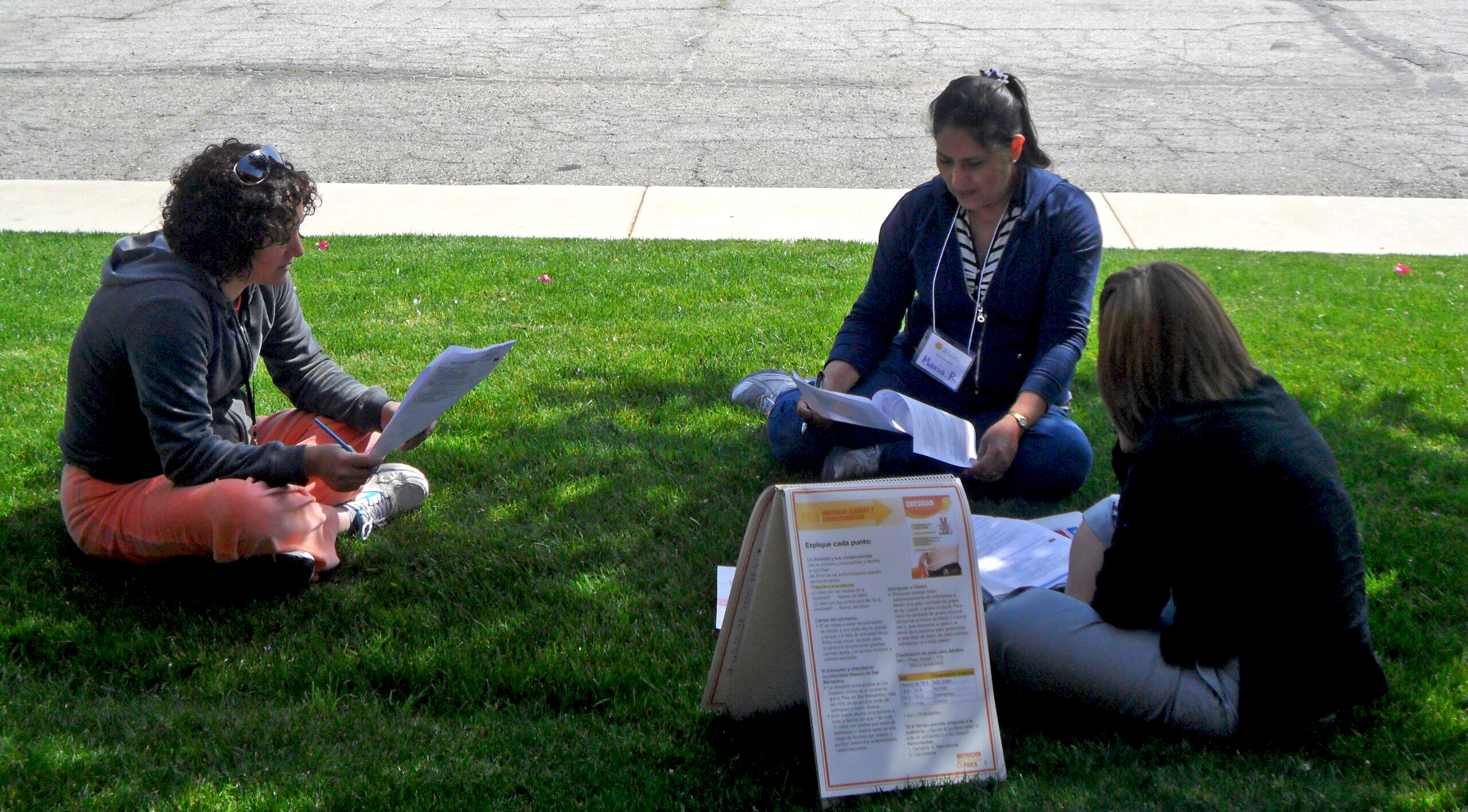
Career Paths for CHW/P Workforce Sustainability
As the Citizenship Schools multiplied and the model was disseminated to other communities in the South, the Highlander Folk School helped Bernice transition into different roles (e.g., mentor of other teachers). As CHW/P interventions grow and CHW/P develop personally and professionally, some CHWs/Ps seek other roles in which to promote change. Some CHW/P entities encourage CHWs/Ps that want to vary or expand their roles to pursue fields such as social work or public health. As Meredith Minkler articulates, there are commonalities between CHWs/Ps, health educators, social workers and other social change professionals. They are all conscious contrarians (Minkler, 2005). Yet, while the CHW movement has overlap with these fields, El Sol CHW/P TC (and other CHW/P entities) sees the value of building up the CHW/P movement by encouraging CHWs/Ps to transition into new roles of increasing leadership (e.g., training coordination and supervision) within CHW/P organizations. Forging an expanded range of roles for CHWs/Ps has the benefit of a) CHWs/Ps staying to work within the same community, b) build institutional memory, expertise and continuity, and c) motivates others to follow the CHW/P career trajectory. Organizations incorporating CHWs/Ps into their operations should consider how to support an expanded range of roles for CHWs/Ps within their organizations.
Conclusion
In this section, we summarize the contributions of this case study to the CHW/P field. We end the case study by offering a tool designed to provide organizations that aim to integrate CHWs/Ps into their operations with a stepwise approach to reflect on key readiness-related decision points along the way. This case study contributes to the CHW/P field in three different ways. These include:
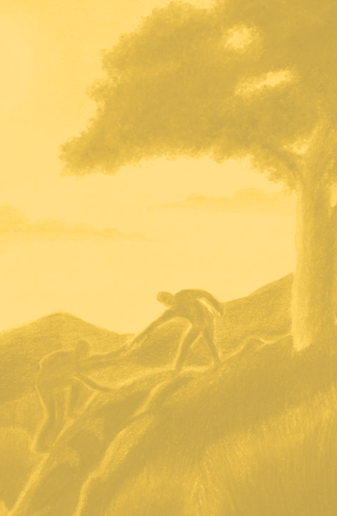
Application of Guiding CHW/P Principles
As discussed above, the growing number of large-scale initiatives to integrate CHWs/Ps into organizations/institutions represents both a risk and an opportunity. The risk is for the CHW/P field to drift away from its agents of change and social justice roots. The opportunity is that with greater insight into the principles, values and intended outcomes that guide CHW/P capacity- building, institutions can build their organizational readiness to place and support CHWs/Ps in conscious contrarian roles.
The risk is for the CHW/P f ield to drift away from its conscious contrarian roots.
This case study explained the inner workings of a CHW/P capacity-building process and the interrelationship between the components. The case study allowed the reader to gain insight into how popular education, health equity and community transformation principles are applied throughout the CHW/P capacity-building process. The authors hope that this insight can generate more reflection, dialogue and action around the process of building organizational readiness to place and support CHWs/Ps.
Recommendations for Building Organizational Readiness to Integrate CHWs/Ps
The existing CHW/P literature describes how many organizations do not have the readiness or support systems organizational culture in place to integrate CHWs/Ps into their organizations, including placing CHWs/Ps in community transformation roles. In the prevention science literature, Flaspohler et al (2008) provide a thorough taxonomy of how organizations can build their capacity to integrate and sustain prevention innovations such as integrating CHWs/Ps. We recognize it is beyond the scope of this case study to address the multiple levels and ways to build organizational readiness to integrate and sustain CHW/P initiatives.
Therefore, we analyzed key themes that the Citizenship Schools had in common with the El Sol CHW/P TC theory of change in order to identify potential key areas to strengthen organizational readiness for entities that aim to integrate CHWs/ Ps into their operations. We identified the following four areas: selecting CHWs/Ps based on their vocation, being able to adapt CHW/P interventions based on what CHWs/Ps are seeing in the field, promoting on-going psycho-emotional empowerment and building career pathways that invite CHWs/Ps to stay in the CHW/P field while advancing their career trajectory.
Organizational Readiness Self-assessment Tool
To enhance the usefulness of this case study, we developed a tool with a stepwise self-assessment tool designed to help organizations identify their level of readiness to move forward with integrating CHWs/Ps.
We recognize that each organizational context is unique. Therefore, this self-reflection tool is not intended to be prescriptive. It is intended to motivate leaders and team members to reflect and discuss how to build their readiness to integrate CHWs/Ps into change agent roles. This process may involve partnering with CHW/P training organizations to advise on how to achieve a balance between maintaining the heritage of the CHW/P movement while responding to the organizational context/conditions.
Epilogue
This case study highlighted how a CHW/P training center incorporated long-standing guiding principles underlying the CHW/P movement such as popular education. As more organizations are integrating CHWs/Ps into their operations, we hope that this case study can help stimulate reflection, dialogue and action among CHW/P organizations on how to incorporate these long-standing guiding principles into their operations. In doing so, we can continue to build examples of CHW/P-centered interventions that reflect values and paradigms such as health care for all, health equity and health as a right.
If more organizations are successful at applying these longstanding principles, the CHW/P movement will be that much closer to reaching the health equity goals that the Declaration of Alma Ata laid out almost half a century ago.
“As more organizations are integrating CHWs/Ps into their operations, we hope that this case study can help stimulate reflection, dialogue and action among CHW/P organizations…”
Appendix
Guide for Organizational Readiness
We propose that organizations engage in the following steps to discern their level of readiness to partner with CHWs/ Ps. Organizations that are integrating CHWs/Ps into new settings must understand their roles in community transformation, addressing social determinants of health, and how to build the capacity to engage in that journey.
El Sol has created an organizational readiness self-assessment tool. For more information about this tool, please reach out to:
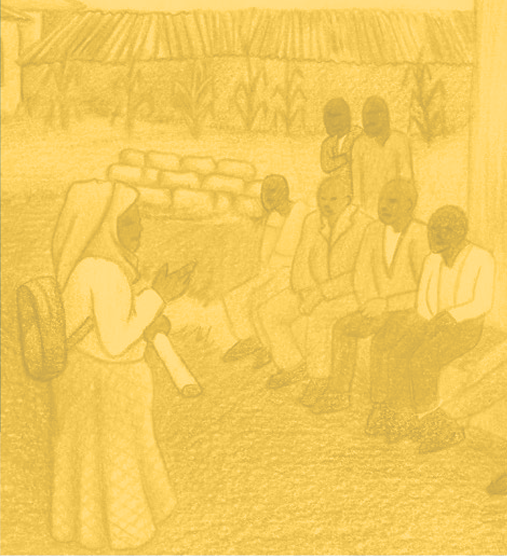
or
- Describe your VSOT (Vision, Strategies, Operations and Tactics). Optional: Consider articulating the relationship between the V,S,O and T.
- Use insight from this case study about the application of CHW/P principles, such as popular education, to do an organizational self-reflection to identify the degree to which your organization embraces community transformation and popular education.
- Identify how applying community transformation and popular education principles education relates to your organizational VSOT. Optional: Consider involving CHWs/Ps and CHW/P Orgs to advise/participate in the reflection process.
- If you are not embracing community transformation, consider innovative ways to partner with other CHWs/Ps and CBOs that have years of expertise.
Acknowledgements
The creation of this study would not have been possible without the hard work, dedication, and efforts of various collaborators. We would like to give our sincere thanks and earnest acknowledgment to the following individuals within each of the contributing teams.
Together with the entire team at El Sol Neighborhood Educational Center and all those who have lent support, we are eternally grateful and indebted to the service you provide and the impact you make on the community.
